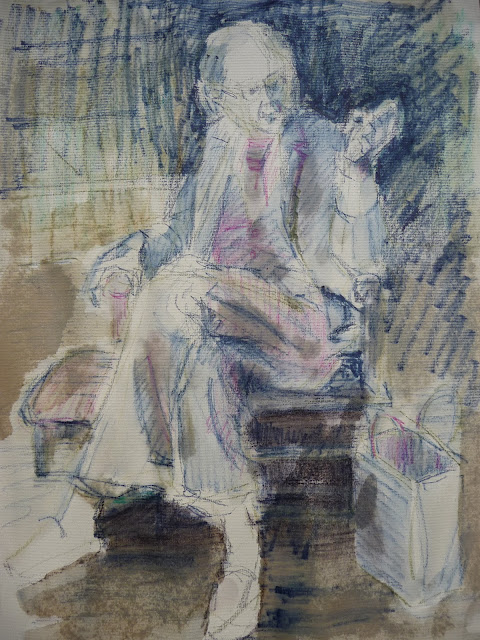Today was another attempt at figure drawing. My friend, Maurie, came to do some sketching and she was happy for me to draw her but she was painting and constantly moving.
The folds in her top were changing all the time as were her legs and feet.
The first was a drawing with intense pencils on A3 using one colour then a wash on top. Because her drawing board hid most of her legs, I found it more difficult to get her legs in proportion.

The second sketch was on grey pastel paper, between A4 and A3, intense pencils, marker pens and white chalk. I was trying to loosen up and concentrate on tone but in the process, lost the proportions. As her hands were moving constantly, I found it tricky to get any detail.
This sketch on the left was started with intense pencil, wash and then sepia ink wash. I then drew into it with a quill (feather) with sepia ink. I had very little control over the marks as it was either thick and blobby or running out of ink.
The next drawing was done in charcoal on A2 paper.
 In spite of finding charcoal easier to handle, I found that going to a larger size paper was more difficult to get anything in proportion and the tones got messier and less defined.
In spite of finding charcoal easier to handle, I found that going to a larger size paper was more difficult to get anything in proportion and the tones got messier and less defined.I then had another try at redrawing Paul using intense pencils and wash. I was trying to get the darker tones and drama of the composition to work.
On the whole I am happy with some aspects of getting the figure more or less lively and looking as though they are sitting not suspended in the air.
I am not happy with the solidity and use of the different media. The composition is boring and needs to be worked out and redesigned. They are all very rough and I think I have problems in getting a finished drawing put together.






